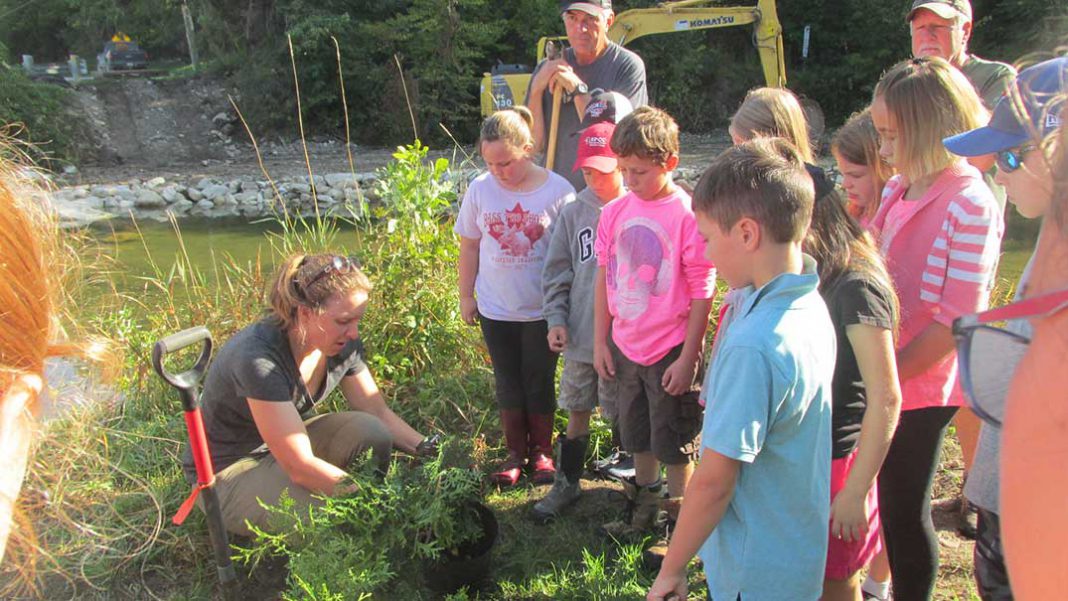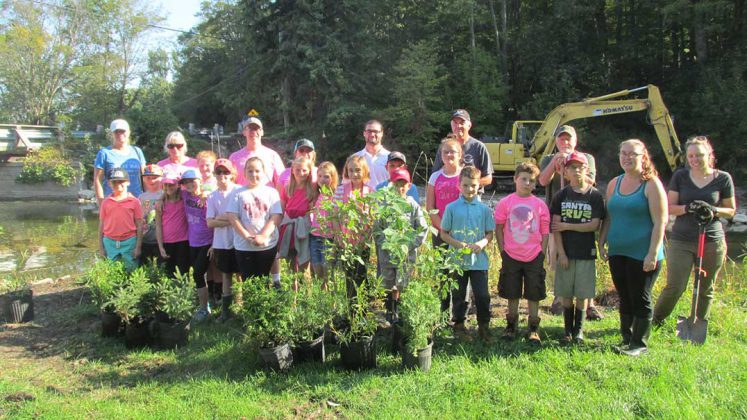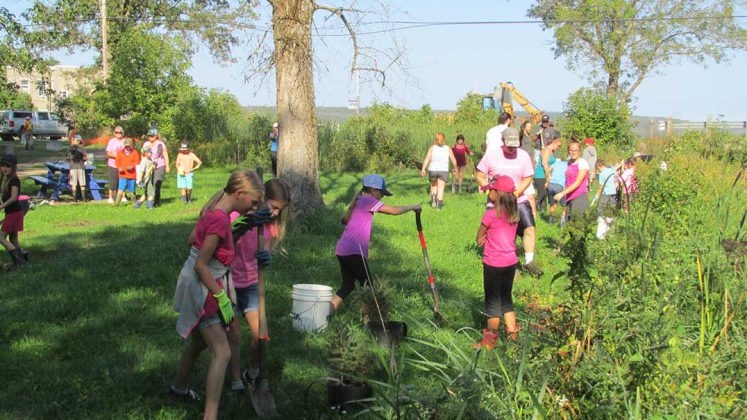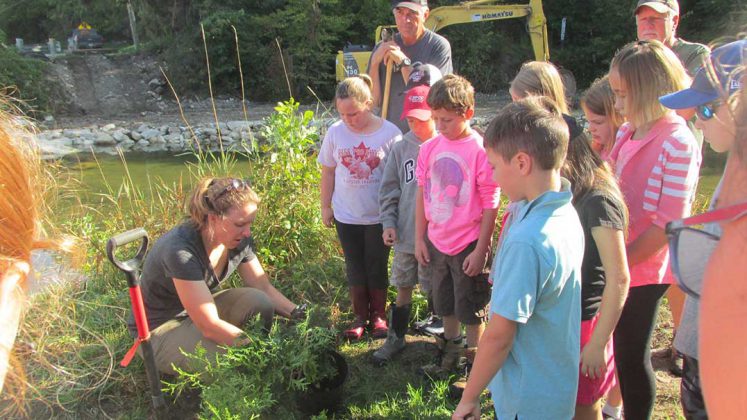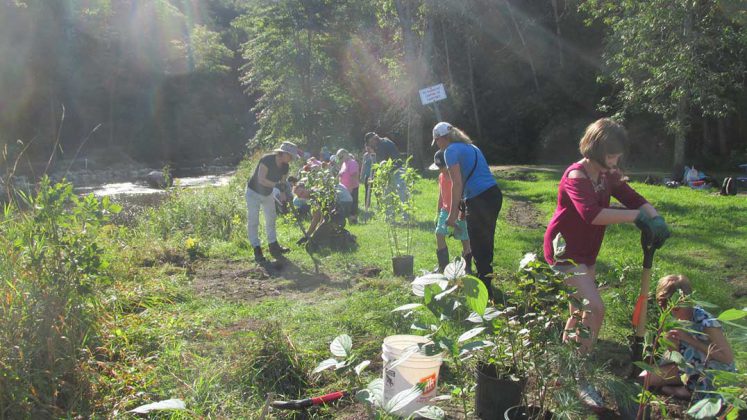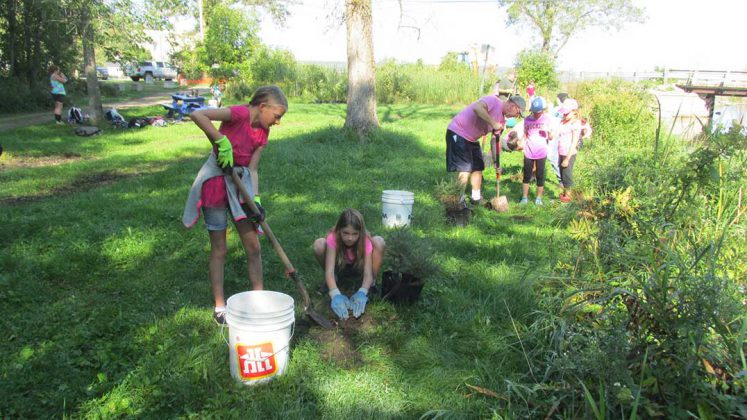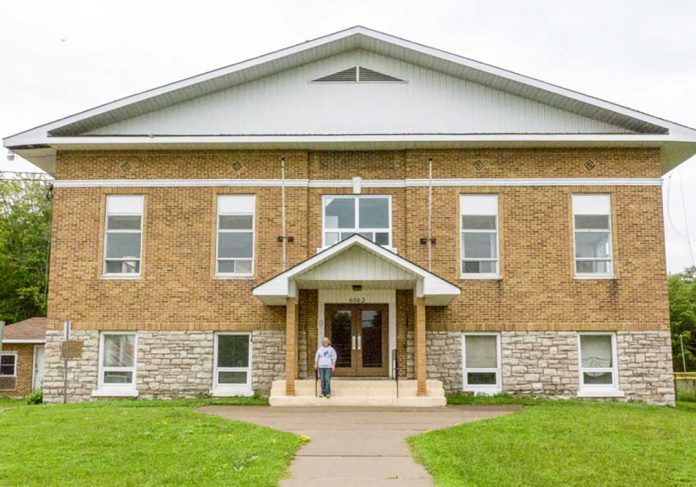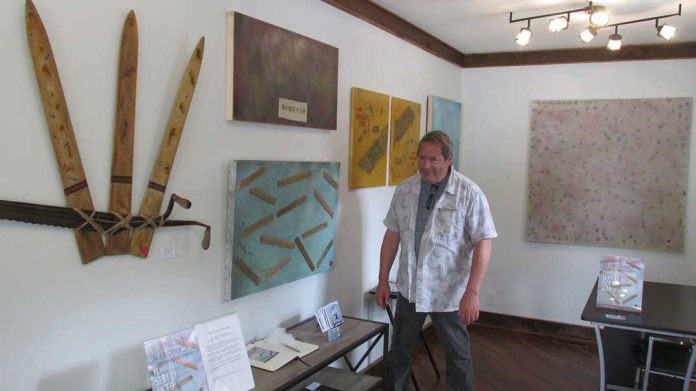Work part of Manitoulin Streams rehabilitation project on Kagawong River
KAGAWONG—Students in the Grade 4-5 class at Charles C. McLean Public School, along with members of the Gore Bay Fish and Game Club (GBFGC), and several local volunteers assisted Manitoulin Streams Improvement Association in a tree planting program last week, as part of the Manitoulin Streams KAG 172 and 174 rehabilitation project.
“That Kagawong site was identified for one of our rehabilitation projects, and we have a Kagawong enhancement strategy in place to get the area at the mouth of the river by the bridge restored,” Seija Deschenes, Manitoulin Streams Project Coordinator told the Recorder on Monday.
“There was an island in the middle of the stream, in the area before the bridge, and although the water was going around it, it was causing a lot of erosion on the banks and more was being taken away from the shoreline,” said Ms. Deschenes. She noted the island was removed so the water could flow in the centre of the stream.
“The Kagwong River drains an area of 243km into Mudge Bay of Lake Huron over a total distance of 3.2 kilometres,” explained Ms. Deschenes. “The upper portion is a slow, winding extension of Lake Kagawong which flows up to the edge of Highway 540. Three dams control the main flow, which then passes beneath Highway 540 and over Bridal Veil Falls. A second outlet upstream allows water to flow into an existing hydroelectric plant discharging into the river downstream. The section of the river downstream of Bridal Veil Falls to the mouth of Mudge Bay is referred to as the Lower Kagawong River; it’s one kilometre long and flows over a mixed substrate of limestone shale, gravel, cobble, boulders and sand. Coho, Chinook, pink and Atlantic salmon, as well as rainbow and brook trout use this area for spawning.”
Ms. Deschenes noted, “Kagawong River is a high tourist area in the town of Kagawong consisting of beautiful cascading waterfalls, walking trails, mixed plant growth, recreational fishing and viewing areas during the spring and fall spawning runs.”
“We are rehabilitating two sites along the Lower Kagawong River,” noted Ms. Deschenes. “There are a total of 20 priority sites to rehabilitate on Kagawong River and of those we have already completed three. Sites Kag172 and Kag 174 were identified in the Kagawong River Enhancement Strategy document with the following issues: fast flowing water; no resting areas for migrating fish; erosion on the right bank widening the river; fluctuating water levels due to a hydro dam; sediment discharge; lack of riparian vegetation and canopy on left side, and the river flow was being split around an island.”
“This year’s work will mitigate bank erosion, improve in-stream and riparian habitat and allow fish easier access to upstream locations for spawning,” continued Ms. Deschenes. “By completing these projects, we expect to rehabilitate 100 linear metres of stream bank, in stream habitat, and riparian buffers.”
The project involves the supply and installation of the following general works at the site, 125 centimeters of river stone, two cross vanes, four metre armourstone view point, 11 root wads, 697 potted shrub plantings, 200 trees and shrubs from Manitoulin Streams nursery planted by the C.C. McLean Grade 4-5 class and GBFGC members and volunteers, seed mix, and coir mat.
For the tree planting, “we try to create a diverse habitat, so we used trees like maple, cedar and a variety of different shrubs,” said Ms. Deschenes. About 200 trees were planted on Thursday and then more on Friday along with 697 planted shrubs. The entire project is to be complete by the end of this week.
Ms. Deschenes noted there were several partners who provided funding including Recreational Fisheries Conservation Partnership Program, Great Lakes Guardian Community Fund, WWF-Loblaws Water Fund, Echo Foundation, Patagonia World Trout, Northern Ontario Heritage Fund Corporation, Manitoulin Transport, OFAH Zone D, Ramakko’s Source for Adventure, various municipalities, various and local interest groups and donors. In-kind support was provided by the Gore Bay Fish and Game Club (tree planting), Sudbury District Stewardship Rangers, College Boreal, La Cloche Ecological Services, Board members and the C.C. McLean Grade 4-5 class.

